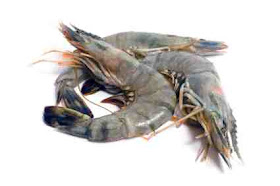The Life of Animals | Prawn | Together with other swimming Decapoda, Dendrobranchiata show the "caridoid facies", or shrimp-like form. Generally the body is slightly flattened side-to-side. The biodiversity of Dendrobranchiata decreases markedly at Increasing Latitudes most species are only found in a region of the between 40 ° north and 40 ° south. Some species may occur at higher latitudes.
Some species of Sergestidae live in fresh water, but most Prawns are exclusively marine. Species of Sergestidae, Benthesicymidae and Sergestidae Mostly live in deep water, and Solenoceridae species live offshore, while most Penaeidae species live in shallow inshore waters, and Lucifer is planktonic. Prawns are "opportunistic omnivores", and Their diet can include a range of food items from fine particles to large organisms. These may include fish, chaetognaths, krill, copepods, radiolarians, phytoplankton, nematocysts, ostracods and detritus.
Dendrobranchiata are of huge importance. While in some countries, Such as the United States, production is almost entirely through fisheries, other countries have concentrated on aquaculture (shrimp farms), including Ecuador where 95% of production is farmed some countries Produce similar amounts from fisheries and aquaculture, including Mexico, China, India and Indonesia.
Species from the family Aristeidae are Important to deep-water fisheries, particularly in the Mediterranean Sea, where Aristaeomorpha foliacea is caught by trawlers. In Brazil, Aristaeomorpha foliacea, Aristeus antillensis Aristaeopsis edwardsiana and are of commercial importance. The most Important species for aquaculture are Marsupenaeus japonicus (Kuruma prawn), Fenneropenaeus chinensis (Chinese prawn), Penaeus monodon (giant tiger prawn) and Litopenaeus vannamei (whiteleg prawn)




